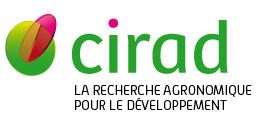Nutrient source, management system and the age of the plantation affect soil biodiversity and chemical properties in raspberry production
Prack McCormick B., El Mujtar V., Cardozo A., Ãlvarez V.E., RodrÃguez H.A., Tittonell P.. 2022. European Journal of Soil Biology, 111 : 11 p..
Soil biodiversity is the driving force behind most soil processes. While potentially improving plant productivity and food quality, it can be negatively affected by land use and soil management. Raspberry production is part of the cultural identity of 'La Comarca Andina' placed within âAndina Patagonicaâ world biosphere reserve. In this study we assessed soil (a) chemical quality and (b) microbial biodiversity in raspberry production as affected by management (certified organic vs. current conventional practice), the source of organic nutrients (commercial vs. on-farm) and the age of the plantation. We sampled twelve plots from neighboring family farms, classified according to the management system and the source of organic nutrients, based on information recovered regarding organic certification, type of agri-food system, weeding and pests control practices, use of chemical fertilizers, tillage regime and type and rate of application of main organic amendments. In each plot we assessed soil pH, electrical conductivity (EC), organic C (SOC), total N, extractable P, soil basal respiration (SBR), biodiversity indexes (Shannon, inversed Simpson and Richness), and bacterial community structure considering separately raspberry rows and inter-rows. The effects of the management system, the source of organic nutrients and the age on soil properties varied between row and inter-row. In the row, these factors had no effects on soil chemical properties; while the source of organic nutrients affected SBR, Shannon index and bacterial community structure. Conversely, in the inter-row, no effects of the factors were detected on SBR (the only biological property analyzed), while the management, the source of organic nutrients, age, or their interactions affected EC, extractable P and total N. Finally, associations were found between soil chemical properties and soil microbial biodiversity. In the row, diversity indexes were positively correlated with SOC and total N, while the ext
Mots-clÃĐs : fertilisation; framboise; caractÃĐristiques du sol; fertilitÃĐ du sol; interactions biologiques; biodiversitÃĐ; biologie du sol; diversification; propriÃĐtÃĐ physicochimique; rÃĐserve naturelle; exploitation agricole familiale; argentine
Documents associÃĐs
Article (a-revue à facteur d'impact)
Agents Cirad, auteurs de cette publication :
- Tittonell Pablo — Persyst / UPR AIDA
